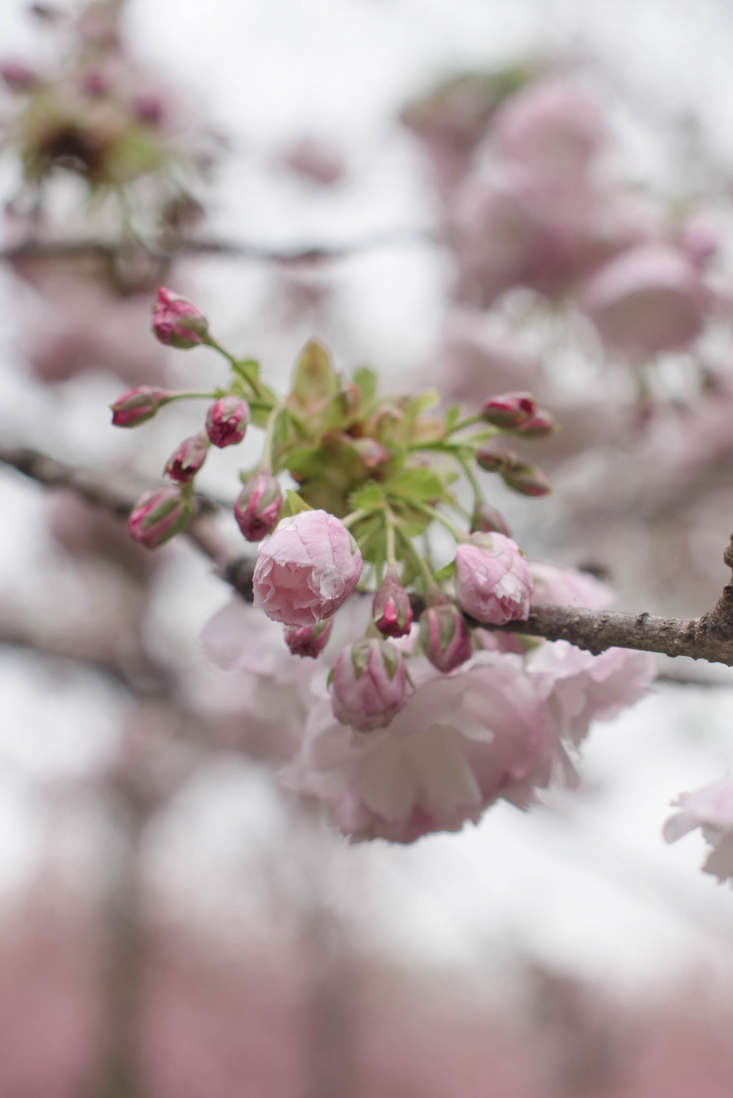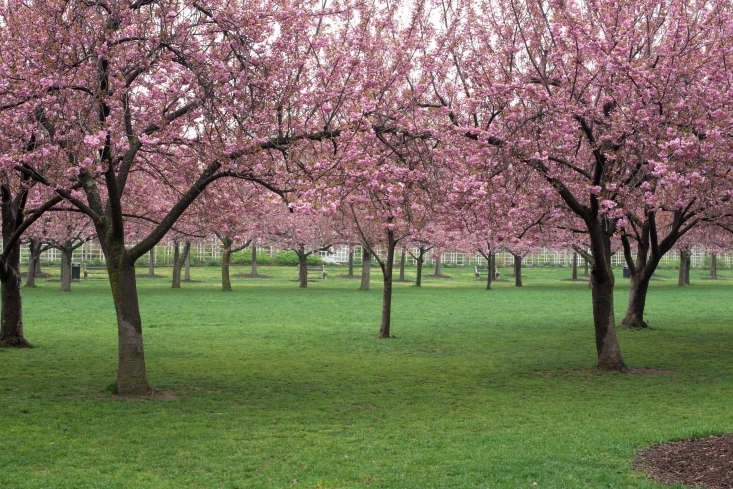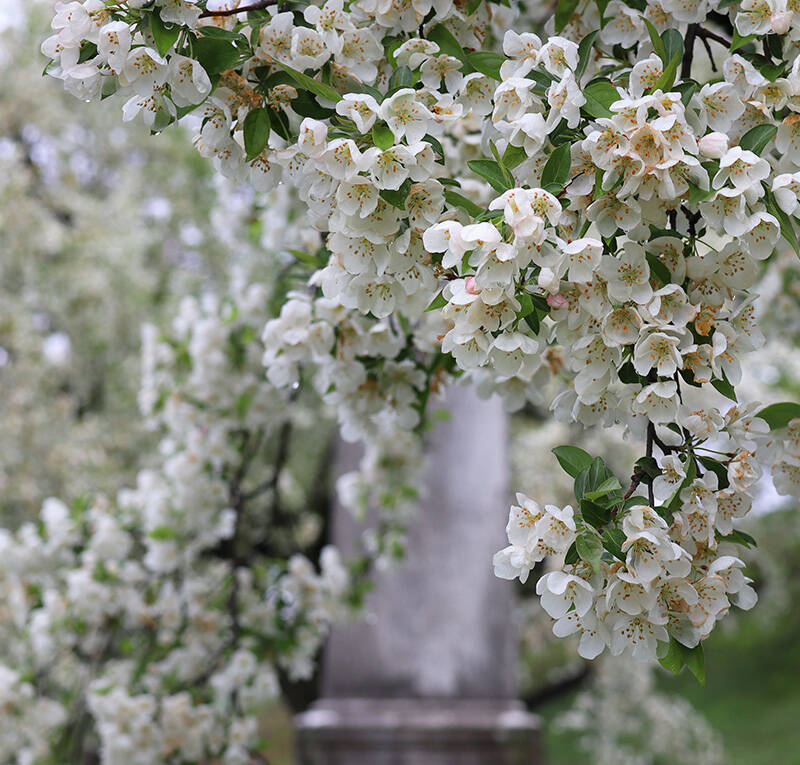It’s cherry blossoms season—the few weeks in April when delicate, cotton candy-colored flowers are everywhere, casting a rosy hue on city streets and Instagram feeds.
This weekend the Brooklyn Botanic Garden celebrates its annual Sakura Matsuri festival, with a dazzling collection of flowering cherry trees in the Japanese Hill-and-Pond Garden and Cherry Esplanade. Here’s a sneak peek at New York City’s most spectacular cherry blossoms—and tips on exactly where to find them as you stroll through the 52-acre gardens:
Photography by Alison Engstrom.

Prunus ‘Kanzan’

How to Find It: Start by the Japanese Garden and take the path to the left.
Why It’s Special: “This popular cultivar is considered by many to be the most showy ornamental cherry,” according to the Botanic Garden’s guide, and a ‘Kanzan’ tree this old is rare.



Prunus serrulata ‘Sogetsu’

How to Find It: Wend your way around the pond; to the left is a quiet Prunus serrulata ‘Sogetsu’ tree, nestled among camellias and ground cover.
Why It’s Special: Large, showy powder-puff flowers change color from a delicate pink to white as they open.

Prunus serrulata ‘Horinji’

How to Find It: Stepping off a small bridge from the Japanese Garden you’l find yourself in Cherry Walk, where the centerpiece is Prunus serrulata ‘Horinji,’
Why It’s Special: Winner of our “Most Photogenic” award for its cloud-like appearance.


Prunus serrulata ‘Kuramayama’

Where to Find It: Walking away from the pond, take a left. You’ll see it blooming alongside the path.
Why It’s Special: Pink-tinged flowers look like tiny petticoats when you look up at them from below.

Prunus serrulata ‘Ojochin’

Where to Find It: Walk to the north end of the Cherry Esplanade and turn right, toward the pond.
Why It’s Special: Hanging clusters of flowers look like pink lanterns.

Prunus ‘Taoyame’

Where to Find It: Dotted within Cherry Walk and the Cherry Cultivars area is the delicate ‘Taoyame’ variety.
Why It’s Special: The name ‘Taoyame’ means “attractive woman,” and the tree’s branches arch gracefully.
Prunus ‘Kanzan’ on the Esplanade

Where to Find It: Can’t miss it. Really.
Why It’s Special: A breathtaking walkway of hazy pink flowers.

Can You Identify the Cherry Blossoms?

Cherry trees are of the Rosaceae family—the same as roses, apricots, raspberries, and plums.
N.B. Share your cherry blossom snapshots with us on Instagram using the hashtag #GDcherryblossoms.
And for more on the varieties in bloom throughout the season, see the Brooklyn Botanic Garden’s Flowering Cherry Collection. (You can also track the blooms via Cherrywatch.)
Can’t get enough cherry blossoms? See more tips for planting and care at our curated guide to Cherry Trees 101: A Field Guide. Check out our posts:
- DIY: The Magical Powers of White Cherry Blossoms.
- DIY: Pickled Cherry Blossoms.
- Stone Fruit Season: 11 Best Recipes for Summer Cherries.












Have a Question or Comment About This Post?
Join the conversation (0)